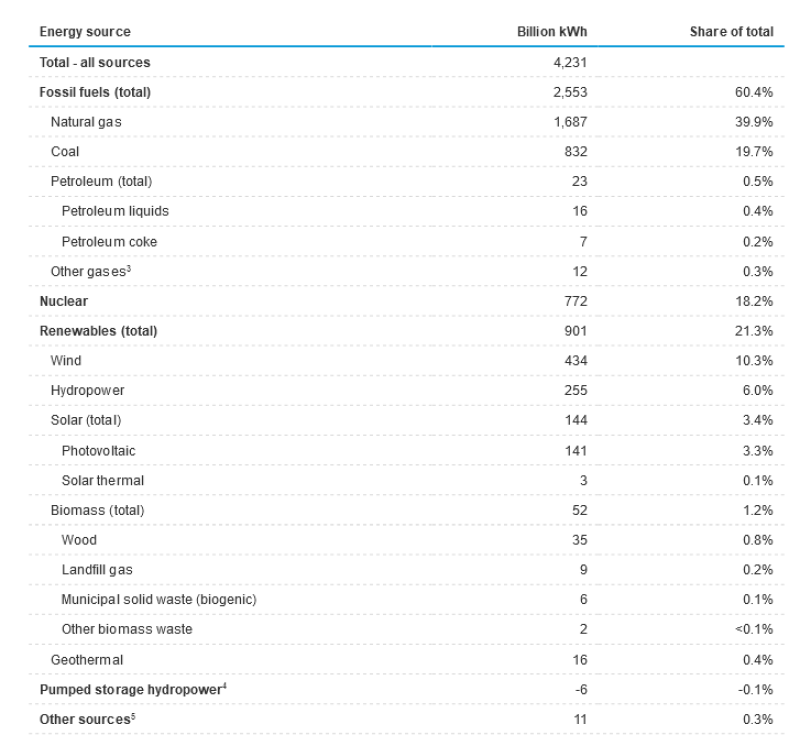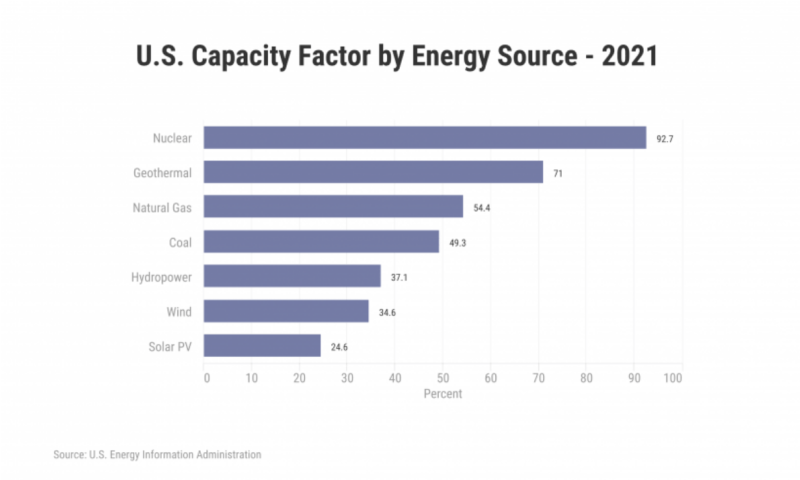This era can be called the golden era for energy research. Mankind is struggling and striving hard to discover an energy source which can sustain the needs of all, has mobility, scalability in its output, is less polluting, and easily adaptable. The biggest sources of energy currently utilized are coal, petroleum, natural gas, nuclear (fission), hydroelectricity, solar, and wind. Other sources can include biomass, geothermal, battery, and hydrogen but are less common/conventional.
Fig. 1 represents only the electricity generation part of the energy source. It does not cover the energy aspect of moving vehicles, airplanes, heat for boilers/smelting units, etc.

If there are several sources already available to fathom, then why is it so hard to switch the energy source?
Financials: The abundance of an energy source or the amount of money spent to estimate the energy source in a consumable format define its financials. In simple economics, if it takes more money to extract energy from the source as compared to the work done by the energy produced, then it is not an economically feasible source of energy. For instance, green hydrogen (hydrogen extracted using renewable sources of energy) requires a large amount of investment which causes the price per unit for green hydrogen to increase—along with the manufacturing, delivery, and/or processing costs which can also be a big factor in defining the price. The price for gasoline or diesel may also increase if it is being delivered to a remote location which does not have a continuous supply.
Abundance of resource: The abundance (in commercial aspect) of the energy source is extremely important in deciding the usability of the source. Resources such as oil or natural gas are also not available everywhere and require an extensive geo-physical/geo-chemical survey before drilling. Wind farms are located at special locations which have a good flow of wind throughout the year. Nuclear fuel, uranium or plutonium, also requires mining, and nuclear power plants also need a tremendous amount of safety protocols. Hydroelectric power plants require an extensive study of the terrain, water flow, weather, and irrigation before setting up.
Solar might be the only energy source which is available abundantly everywhere and can be salvaged even at a smaller tier level (such as a single home or facility).
Capacity factor: This is defined as the ratio of the electrical energy produced by a generating unit for the period of time considered to the electrical energy that could have been produced at continuous full-power operation during the same period. The capacity factors are usually defined for a power plant. Nuclear power plants have the highest capacity factor in the US, which means they produce at the maximum capacity for most of the time (Fig. 2).

Conventionality: This is possibly the biggest aspect of all which decides the usage of an energy source, especially in today’s world, but is not often talked about. It is something we all see around us but cannot explain in words.
The invention of fractional distillation, internal combustion engines, automobiles, airplanes with the advent of the World War I and II century created a huge demand and supply of an energy source which was easily transportable, combustible, and economical. Crude oil and its products (diesel, gasoline/petrol, kerosene, tar, naphtha, etc.) very quickly gained momentum which took over the entire world. Transportation soon became easier with better-performing engines, and crude oil soon found its way into the plastic industry as well.
The crude oil and crude oil products have taken more than a century to bury themselves deep into our civilization and become an essential part of our daily lives. Their removal can only lead to retrogression of our current way of life and technology. Let us take the example of automobiles.
Although Leonardo da Vinci had designed a very complicated self-driven horseless carriage, powered by springs, and Nicolas-Joseph Cugnot is called the inventor of the first automobile (steam- powered, three-wheeled tank running at a whopping speed of 4 kmph! It needed to be stopped every 15-20 min to steam up), the first automobile running on an internal combustion engine powered by gasoline/petrol, similar to what we have today, was made by Karl Benz in 1886.
Soon after this the demand for faster mobility started increasing and people were immediately attracted to this new invention. This not only increased the demand for fuel but also the spare parts for the cars and the internal combustion engine. Soon supply chain management was designed to cater to this demand all over the globe and pipelines, tankers, sea routes, pumping stations, storage tanks, petrol pumps/gas stations were created. All these establishments, systems, and mechanisms were made with the sole purpose of providing gasoline/petrol to an individual’s automobile.
A change in the type of engine might lead these facilities to become obsolete and the supply chain to be reestablished, which can be a bigger task. An option for LPG/NPG/propane-powered cars was a big success in terms of ensuring that the design of the engine did not change, and the vehicle remained and performed similarly. A similar result was observed with hybrid vehicles (electric and gasoline/petrol).
However, powering the propane engines with hydrogen will not only lead to change in the supply chain establishments for fuel but also the spare parts for cars/engines. Each car would need to be equipped with a hydrogen cylinder with extra safety precautions. Gasoline pumping stations need to be converted to hydrogen pumping stations which will need enhanced safety precautions. Even if hydrogen-powered cars run on fuel cells, there is a bigger concern on safety for hydrogen as history has always told us.
Hence, to find the next optimum source of energy, especially for prime movers, the conventionality or the amount of change required to implement it is also something to keep in mind.
Buying eco-friendly products will not resolve the climate change problem as buying itself is a part of the problem. An ideal energy solution would be the one that does not need revamping of the existing infrastructure but utilizes (reuses) it.
| Automobile Energy Source | Pro | Con |
| Synthetic Fuel | No change to the cars/engines required | As the fuel can be manufactured using only renewable energy sources the supply chain management for manufacturing and delivery becomes very difficult. |
| Hydrogen | The overall construct of the engine shall not be changed for hydrogen combustion. As a fuel cell it has a different application. | The supply of the hydrogen and the safety associated with it will need to be established. |
| Electric | Electrical supply needed to charge can be done at home as well or any location. Existing gas stations can also be modified very easily. | Current supply of gasoline cars will need to be replaced and recycled with electric cars which will require a large amount of resources. |
| Biofuel or any other source of fuel | Cleaner production and cleaner combustion. Less footprint in manufacturing. | The efficiency of production of the fuel is very less and hence may end up getting more polluting if manufactured on a large scale. |
This, however, does not mean that electric cars and eco-friendly products cannot help the planet. They can help in the short term, but it is essential to understand that even though they may seem to be “greener,” they may not be the solution to the problem.
Aman Srivastava is the 2023–2024 TWA editor in chief. You can follow his personal blog for more articles related to the current energy situation globally.
For Further Reading
Nuclear Power Is the Most Reliable Energy Source, and It's Not Even Close, Office of Nuclear Energy
The Elusive Green Consumer, by K. White, D. Hardisty, and R. Habib. The Harvard Business Review
Buying Less Is Better Than Buying 'Green'—for the Planet and Your Happiness, ScienceDaily


